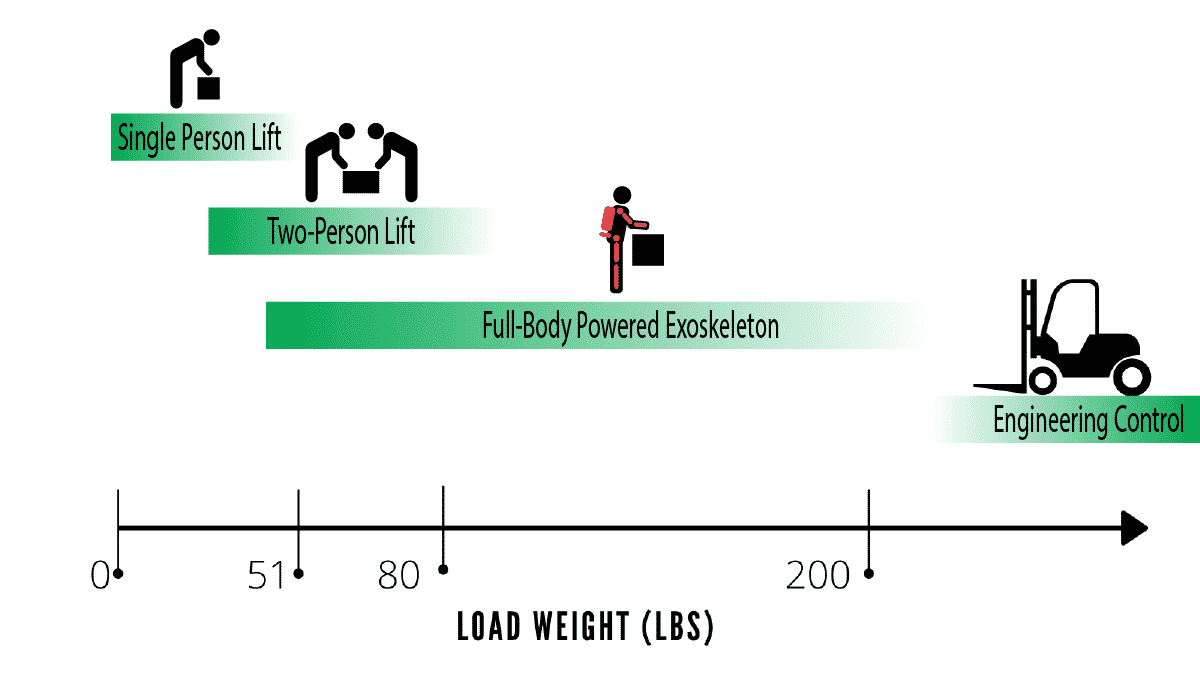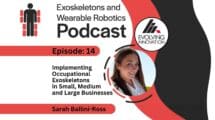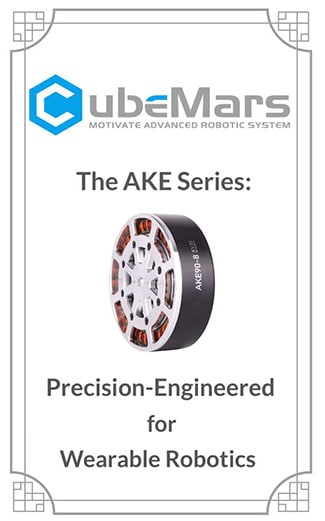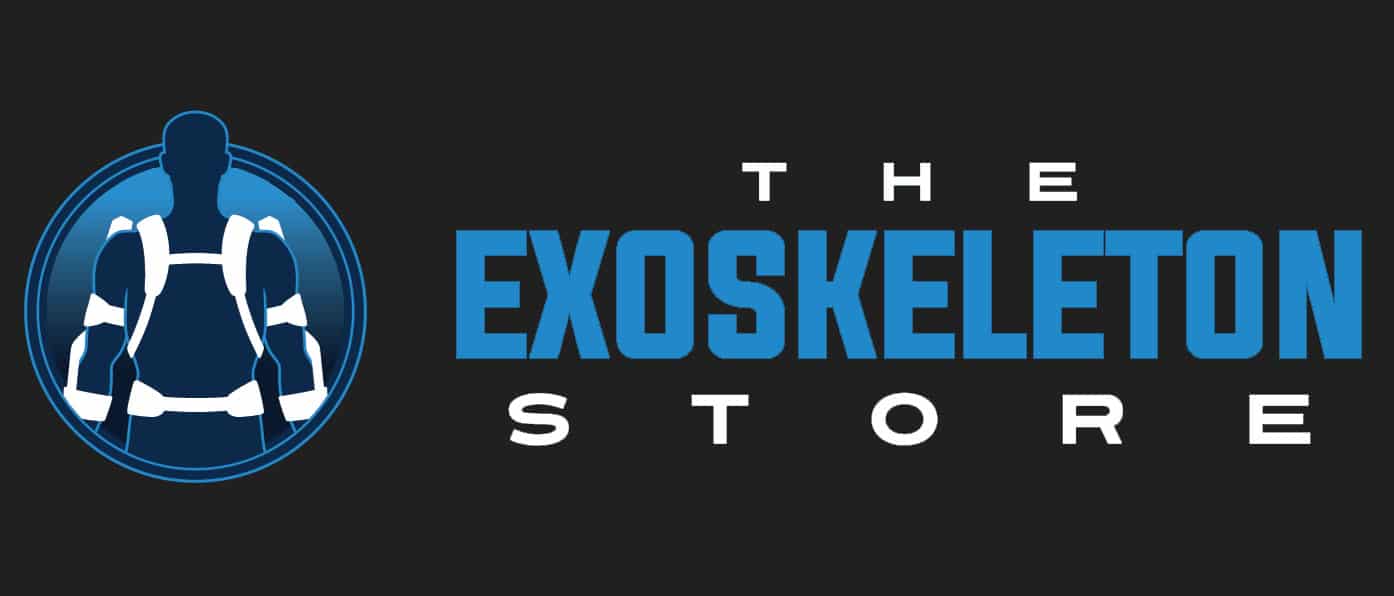Sarcos Robotics announced today that it is ready to ship the first units of the Guardian XO Alpha exoskeleton to industrial and military customers in January 2020. The Guardian XO Alpha is a full-body, untethered powered exoskeleton with 24 electrical motors that can handle loads of up to 200lb.
But does Sarco Robotics leadership realize that the wearable robotics industry has shifted towards smaller and lighter devices years ago? How is this monster of a wearable robot operated, what can it do, and is it safe? I received answers to these questions and much more during my November trip to Sarcos Robotics HQ in Salt Lake City.

Sarcos Robotics, located 14 minutes East of downtown Salt Lake City, is walking distance away from the University of Utah. The headquarters is housed in a two-story building that staffs both a research and a product development team. Over the last three years, Sarcos has built and integrated its product development team from scratch. This new team focuses on making sure the concepts created by R&D can be turned into an easy to manufacture and service products. This was a welcome surprise, as many companies (both small and large) forego process development and attempt to leapfrog directly from research to mass production.
Entering through the double doors of the building, visitors are greeted by nearly a dozen life-size displays and examples of previous Sarcos Robotics work in the field of wearable robotics. The foyer represents more than 20 years of research, concepts and prototypes. There are few exoskeleton developers that have such a tremendous body of work and even fewer that have it saved and on display (the only other example that comes to mind is the south wall at Ekso Bionics).

This human augmentation developer has spent the better part of two decades building full-body powered exoskeletons, but why? Well, because the concept is simple and it makes sense, says CEO Ben Wolff. It simply makes sense to take the weight of the wearable and the load it is handling and direct it directly to the ground. While smaller exoskeletons for military and industrial applications can be easier to produce, conceptually, it is harder to understand what happens to the forces they redirect. The Guardian XO Alpha’s control software executes on the set fraction of forces that will be experienced by the user (more on the Guardian XO software later).
The Guardian XO attempts to fill a gap in the current scheme of material handling for objects that are too heavy for people to lift but are too small to justify being palletized. The Revised National Institute of Occupational Safety and Health (NIOSH) Lifting Equation (1994) defines the maximum weight to be lifted with two hands, for workers performing eight-hour shifts, under ideal conditions, at 51 pounds. Two-person lifts can be conducted as long as there is access and the weight can be evenly distributed at all times. Realistically, an x2 multiplier for the maximum safe-to-lift weight is hard to achieve. For any objects heavier than 80 pounds the standard hierarchy of controls applies: elimination, substitution, engineering controls, administrative controls, and personal protective equipment.
When faced with handling heavy objects that can’t be eliminated or substituted there are two options: add more people to the task or introduce an engineering control such as a forklift, overhead lift, industrial manipulator, etc… However, this introduces a blind spot where there is no obvious solution for objects such as boxes, crates, pipes, spools, missiles and the like. They can be too heavy for a two-person lift but either too small for a forklift or inaccessible to mechanical industrial manipulators. The Guardian XO Alpha aims to fill this gap.
Hardware

The Guardian XO Alpha exoskeleton has journeyed a long way from its much earlier XOS 2 variant. The Guardian XO has 24 powered directions of motion (degrees of freedom). It has evolved from a tethered hydraulic device that consumes 3,000 watts to a battery-operated wearable device that aims to run in the 400-watt range. Different sized battery packs can be installed on the unit and they come in pairs that slide in so one can be replaced while the other continues powering the device.
The two units on display at Sarcos were prototype P1 and P2, but they are a close approximation to the Alpha unit that will start shipping early next year. One notable exception is the lack of the fairings, which have not been installed on the prototype (much like removing them from a sportbike). While the company has experience making robotic end-effectors that can hold hundreds of pounds, a choice was made to keep the cost and complexity of the alpha units down by having bolt-on extruded aluminum attachements customized to the task at hand.

Get-Out-Of-The-Way Control
Controlling a massive exoskeleton with 24 motors is no simple task. The user has access to an operator control panel which is about the size of an iPhone. Because the arms are not strapped, it is easy to place the exoskeleton arms in a lock position while the user accesses the control panel. The exoskeleton-user-environment link is supported using 125 built-in sensors. The recent reductions in the cost of sensor technology make this project a possibility. Unlike many other exoskeletons, this device is meant to give the user “superhuman strength” while minimizing the forces on the user. From a user control perspective, the design team prefers not to reduce the forces on the user to zero.

If you assumed that the Get-Out-Of-The-Way Control system is a safety feature that alerts nearby workers that a full-body exoskeleton is coming their way, that would be good guess, but wrong. What this refers to is that the Guardian XO Alpha motors do two distinct tasks: gravity compensation and inertia reduction. In other words, a spring-loaded exoskeleton or industrial arm that is tuned for a specific weight keeps a load (such as a tool) in the air indefinitely. However, moving it will require the user to accelerate and then decelerate the object in question every time. The software system by Sarcos can not only provide gravity compensation but also reduce the object’s inertia. In order to distinguish between the two, the developers at Sarcos had set up a hands-on demo to specifically illustrate the point.
Controlling the arms of the Guardian XO is completely intuitive. A “simple” handle at the end of the wearable robot is the only connection point with the arm (no straps). In reality, the handle appears “simple” to the user, but it is sensitive enough to detect and amplify the desired motion. In the demo, within a minute a user can effortlessly move a 30lb weight in front, to the side, or above them. The software control multiplies the intent of the user without transmitting the force in return. The control scheme is smart enough to recognize unwanted input such as a hand vibration or sudden jerk.
 Safety
Safety
The Guardian XO Alpha fills a need, has impressive hardware and software, but is it safe to use? The Sarcos team has utilized their X-Tag Industry Focused Exoskeleton Technical Advisory Group to bring in safety experts to evaluate the machine, sometimes staying three days at a time. The user can leave the Guardian XO in 30 seconds or less. The exoskeleton attaches only at the feet, waist, and chest. The arms will not work unless the user is firmly gripping the control handles, otherwise they lock into place. In case of a power failure, the remaining electricity is cycled through the motors, significantly hindering any rotational motion so the joints can slowly come to a resting position.
In case of a trip or fall, the exoskeleton is designed to automatically lift the arms and create a roll cage around the user. Also, if anyone wants to use two or more exos to run a real-life version of rock em’ sock em’ robots they will be out luck, the software does not allow the Guardian XO to throw a punch.

Transportation
The Guardian XO Alpha comes with a docking pod which includes an automatically adjustable height pillar that connects to the exoskeleton. This allows for the human augmentation device to be positioned at the correct height for users between 5’4″ and 6’0″ to easily donn or doff. The powered suit in a sitting position and the retracted docking station together form a rectangular shape that is easier for crating and transportation.

Shrug
Between moving ammunition boxes, carboys and a mock-up missile while chatting, Fletcher Garrison, the user of the Guardian XO prototype made a very human gesture. He shrugged while responding to a question. What happened next, was straight out of a science fiction movie. The entire full-body exoskeleton rose a good inch to inch and half to match his motion and shrugged with him. The entire episode lasted just a few seconds but speaks volumes to the synchronization between man and machine that was on display.
Reference:
Sarcos Robotics Begins Delivery of Guardian XO Full-Body, Force-Multiplying Industrial Exoskeleton Alpha Units, Sarcos Robotics Press Release, Dec 10, 2019, link
Ergonomic Guidelines For Manual Material Handling, Cal/OSHA Consultation Service, Published 2007 by the California Department of Industrial Relations, link










So excited to finally see this reach a product level! Been watching its development for years. Was worried it would fade away as a cool but impractical project. Still can’t believe the battery life they’re able to get out of that thing. 500W power usage seems insanely low for something that massive. That’s less than a toaster…